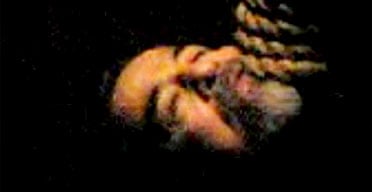Camera footage of the final minutes of Saddam Hussein released yesterday shows him being taunted by Shia hangmen and witnesses, a scene that risks increasing sectarian tension in Iraq.
As he stood at the gallows, he was tormented by the hooded executioners or witnesses shouting at him to "Go to hell" and chanting the name "Moqtada", the radical Shia Muslim cleric and leader of the Mahdi army militia, Moqtada al-Sadr, and his family.
The grainy images, which appeared to have been taken on a mobile phone, disclose exchanges between Saddam and his tormentors, the moment when his body drops through the trapdoor, and his body swinging, eyes partly open and neck bent out of shape. In what Sunni Muslims will perceive as a further insult, the executioners released the trapdoor while the former dictator was in the middle of his prayers.
Sunni Muslims, who were dominant under Saddam, but are now the victims of sectarian death squads, will see the shambolic nature of the execution as further evidence of the bias of the Shia-led government. They have repeatedly claimed that the Iraqi government, helped by the US and British, conducted a show trial, based on revenge rather than justice.
Saddam's team of defence lawyers claimed that the hanging had been simply "victors' justice".
The unruly scenes will also dismay the US and British governments, that are also privately alarmed at the sectarian bias of the government, led by the prime minister, Nouri al-Maliki. The US and Britain believe at least some members of the Iraqi government are complicit in sectarian killings, particularly by members of the police force.
The Iraqi government last night denied the execution had been sectarian or designed for revenge. Hiwa Osman, an adviser to the Iraqi president, Jalal Talabani, told the BBC: "This whole execution is about justice."
As Saddam was buried in this home village, Awja, outside Tikrit, yesterday morning, the leaked footage appeared on the internet and on Arabic television stations. While Saddam was professing Muhammad as God's prophet, he was interrupted by shouts. One of the people observing the execution chants "Moqtada, Moqtada, Moqtada". Saddam dismissively repeats the name Moqtada. The noose around his neck, he appears to smile and shoots back: "Do you consider this bravery?"
Another voice shouts at him to "Go to hell". Saddam, seemingly accusing his enemies of destroying the country he once led, replies: "The hell that is Iraq?"
A Shia shouts "Long live Mohammed Baqir al-Sadr," a member of Moqtada's family thought to have been assassinated by Saddam's security services. Another onlooker pleads for dignity: "Please don't, the man is facing execution. Please don't. I beg you, no!"
As Saddam continues with his prayers, saying "I profess that there is no God but God and that Muhammad ...", the executioners release the trapdoor. There is a shout: "The tyrant has fallen."
Although many Sunni Muslims also suffered under him and were glad to see him go, the manner in which the execution was carried out will have created some sympathy for Saddam. The fact that the execution took place at the start of the main Muslim religious holiday will further inflame Sunni opinion.
The tit-for-tat killings between the majority Shias, who suffered badly under Saddam, and the previously dominant Sunnis, has created a de facto civil war that could break up the country. Sunni insurgents, particularly a branch of al-Qaida, have sought to fan the civil war by carrying out a series of devastating car bomb attacks on Shia population centres, particularly Sadr City in Baghdad and towns such as Hilla and Najaf.
The response among Sunnis to the hanging and the video was to swear revenge. A man from Mosul, a mixed city in the north, told Reuters: "The Persians have killed him. I can't believe it. By God, we will take revenge." He was referring to Iraq's new leaders' ties to Shia Iran, and the Shia in general.
Accusations that the government had mishandled the execution were not confined to Sunni regions. In the Kurdish region, there was also criticism. "This execution should have been for all of Saddam's victims, and instead they have hijacked it and turned it into a sectarian event," said Anwar Abdullah, a student at the technical institute of Sulaymaniyah.
Rebwar Suliman, 21, whose uncle and grandfather were killed by Saddam's secret police in Kurdistan in the 1980s, said: "It does a dishonour to the Kurds."
Saddam was buried in the dead of night, prompting an outpouring of grief and anger from fellow members of his tribe and other Sunni Arabs. His body was flown by US military helicopter to Tikrit and then taken to the village where he was born.
Hundreds of mourners visited his tomb inside a marble-floored hall built by Saddam. Others attended the Great Saddam Mosque in Tikrit.
The funeral came as it was reported that the US death toll in Iraq since the invasion had reached 3,000. The US military had disclosed yesterday that an American soldier had been killed by a roadside bomb in Baghdad on Saturday, the 2,999th death since the invasion in 2003. But the website www.icasualties.org, yesterday also listed the death of Specialist Dustin Donica, 22, on December 28 as previously unreported, bringing the total to 3,000.
George Bush is expected to face renewed domestic political pressure following the latest milestone. Although the 3,000 figure is symbolically important for Americans, Iraqis suffer that rate of casualties on a monthly basis.
